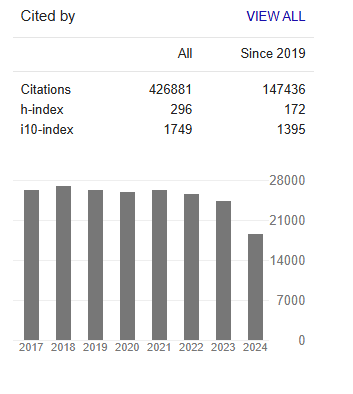Short Communication - (2025) Volume 4, Issue 3
The Big Bounce of the Universe
Received Date: Apr 07, 2025 / Accepted Date: May 12, 2025 / Published Date: May 26, 2025
Copyright: ©2025 Yvan-Claude Raverdy. This is an open-access article distributed under the terms of the Creative Commons Attribution License, which permits unrestricted use, distribution, and reproduction in any medium, provided the original author and source are credited.
Citation: Raverdy, Y. C. (2025). The Big Bounce of the Universe. J Electrical Electron Eng, 4(3), 01-02.
Abstract
The evolution of our Universe is one of the major topics of Cosmology. Today's, science provides a set of indications based on the big bang and expansion, which proves incomplete, particularly for Beginning and End phases. Our goal here is to propose new complementary solutions using the concept of a quantum Superfluid Space-Time (2), which provides information about its content and the properties of its constituents. The first part of this work, subject of this publication, concerns these phases, which, according to our understanding, merge and generate a rebound following a contraction (big bang).
Introduction
Number of observations justify the global expansion of our Universe. The Standard Model, based on Relativity, leads to an initial singularity that raises several fundamental questions, starting with the conservation of energy. In addition, very recent observations from the James Webb telescope have cast doubt on the dating of the first stars and black holes. To these questions, Roger Penrose has given an answer that of a cyclical universe presupposing a rebound from the previous universe [1]. The hypothesis of a super-fluid quantum granular Universe seems to lead us in this direction [2].
Energy Density of the Universe
To date, our Universe has an average energy density of the order of 10^-9 J/m^3, if we accept the principle of conservation of global energy in a Universe which has been expanding since the beginning; this energy density must have been enormously higher during the formation of the first stars, and even higher at the beginning (Big Bang) [2]. Considering a discretized Universe whose fundamental building blocks (the QF) are equal and indivisible elements of well-defined energy and dimension, is naturally to excludes any singularity and contains the idea of a maximum value of the energy density associated with a defined volume, at the beginning [3].
Necessity of a Contraction Period
This brings us back to the big problem of the Standard Model: infinite expansion or eventual contraction depending on the position of the energy density relative to a critical value. It should first be noted that simply asking the question implies that we consider the finiteness of the universe, which is also consistent with this model. We have considered that the “quantum super-fluid” Universe was composed of three phases; first a dynamic phase which constitutes the fundamental level of the fluid, responsible for expansion, and second two inertial phases which are “ordinary matter” and gravitational energy, these phases induce a contraction by gravitational attraction [4,5]. We also relate that the balance between the two types of phase was linked, at the microscopic level, to the exchange of the elementary action h at each periodicity of an elementary particle, which corresponds to the capture of a QF coming from the fundamental level. This mechanism causes the progressive disappearance of the energy of the dynamic phase in favor of that of the inertial part and therefore, ultimately, the contraction of the Universe under the effect of gravitational forces.
Rebound (Big Bang); Beginning of the Cycle of the Universe
We believe that the contraction phase will lead to a critical energy density causing a radical phase transition in an explosive reaction (Big Bang). This reaction must be described by the thermodynamics governing the properties of the quantum fluid that is our Universe. Such a phase transition, instantaneous and at constant energy, must lead to a very high drop in entropy at a very high temperature.
This hypothesis allows the principle of conservation of energy to be respected and the initial singularity to be eliminated. The radius of the universe, at time zero of the cycle, must be much smaller than that of today, without being microscopic.
Conclusion and Outlook
This hypothesis of a cyclical Universe requires justification and must be clarified by describing the expansion and contraction periods. We also believe that it is necessary to develop a thermodynamics approach adapted to the quantum fluid, in order to obtain quantified values for the evolution of the durations, dimensions, and energy of the different phases.
References
1. Penrose, R. (2006). Before the big bang: an outrageous new perspective and its implications for particle physics. In Proceedings of EPAC (pp. 2759-2763).
2. Raverdy. “The nature of Vacuum energy” viXra 2312.0007.
3. Raverdy. (2023). “A formula for electron mass calculation based on new fundamental concepts”. J Pure Appl Math. 7(2):129-133 and viXra 2208.0154 .
4. Raverdy. “About Dark Energy”. viXra 2405.00061.
5. Raverdy. (2024). The Dark Matter. Space Sci J, 1(3), 01-03.




